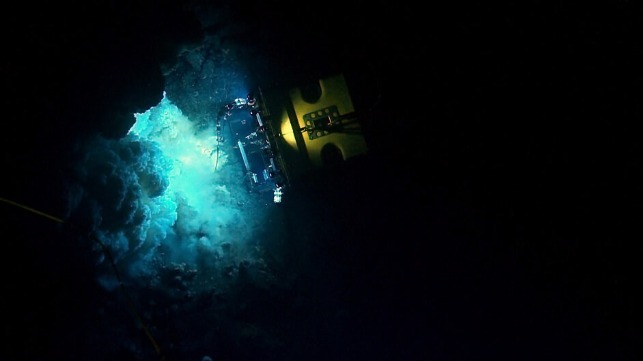The Undiscovered World of Subsea Volcanoes

Volcanic activity is the posterchild of nature’s destructive power. When they happen on land, volcanic eruptions leave a trail of destruction to real estate and loss of human life. As of 2015, approximately eight percent of the world population lived within 60 miles of a volcano with at least one significant eruption. They are a source of both risk and prosperity: fertile soils created by volcanic ash can fuel agriculture, and the heat from volcanic activity can be tapped for electricity production (geothermal energy).
Current scientific knowledge of volcanoes is largely built on eruptions that are observed on land, but scientists contend that volcanology can help provide nuance in ocean research as well. Specifically, undersea volcanoes are increasingly helping marine scientists to understand marine biogeochemical cycles - the manner in which nutrients circulate in oceans. The foundation of ocean productivity, and hence the fisheries it can support, is based on this cycle.
“It’s strange, that despite their importance and the flair for the dramatic, submarine volcanoes haven’t found their way into the zeitgeist,” writes Dr. Robin George in his new book, "Super Volcanoes."
We now know more about outer space than we do about the submerged seamounts that host some of the most unique habitats for life on Earth.
“One of Earth’s most underappreciated biodiverse habitats is, for now, mostly a mystery. That’s left a chasm in the collective understanding of the full extent of our largely detrimental effects on the world’s watery domains. And the threats these habitats face, from warming oceans to commercial fishing to a controversial, nascent deep-sea mining industry, are mounting,” added Dr. Robin in an article he wrote for Vox.com.
The Pacific islands of Nauru and Kiribati, themselves a result of volcanism, have petitioned the International Seabed Authority (ISA) to expedite an approval to begin deep-sea mining operations. Many scientists see this as reckless, especially due to limited knowledge of deep ocean ecosystems.
In a recent global conservation summit held by the International Union for Conservation of Nature (IUCN), thousands of conservationists, scientists and diplomats voted overwhelmingly in favor of a moratorium on deep sea mining and new exploration contracts until there is proof that marine ecosystems can be protected effectively.
Humans have only explored a tiny fraction of the deep sea, home to most of the Earth’s volcanoes. If all these underwater volcanoes were merged, their total area would be roughly equivalent to Europe and Russia combined. Thus, deep-sea mining becomes scary in the sense that it targets these deep-sea habitats - abyssal plains, seamounts and hydrothermal vents - to extract minerals. No one can characterize the level of potential impacts it would have on these fragile ecosystems, teeming with marine life. The vast majority of species down there remain undiscovered, precisely due to the cost, expertise and technology required to do so.
Remarkably, seamounts have been shown to be waystations for marine life making voyages across oceans. That is, they are oceanic outposts where life can seek refuge, refuel and raise offspring before proceeding with their journey.
For example, sea turtles coming from the Great Barrier Reef use Kavachi (an active submarine volcano in the Solomon Islands) as a transit point for feeding before moving on.
“Undersea volcanoes can even protect life against climate change. Shallow depths are warming quicker and acidifying faster as we continue pumping greenhouse gases into the sky. Seamounts deeper down will likely act as castles for biodiversity,” explains Dr. Robin.
If you sail about 300 miles west from the Oregon Coast, you will be floating above Axial Seamount, where scientists have established a global model of an undersea volcanic observatory. Scientists have wired up the active volcano with hundreds of sensors and cameras, sending gigantic amounts of data back to shore. The goal is to have a continuous glimpse into pyrotechnics of volcanic activity hidden in the dark recesses of the ocean – and begin to answer some of the longstanding questions about how this activity affects our planet.
